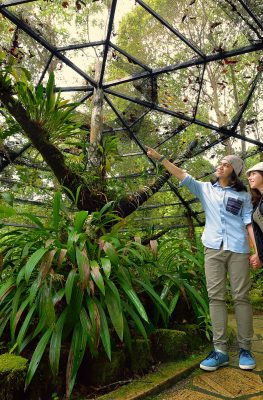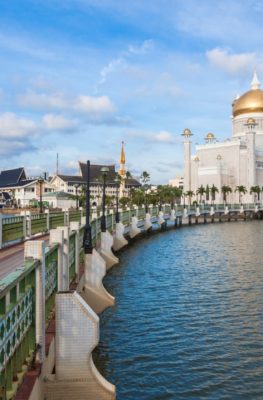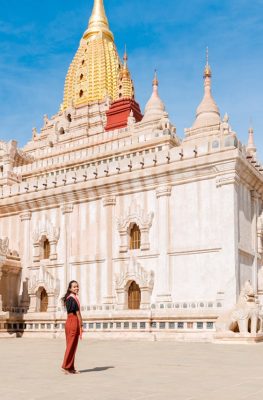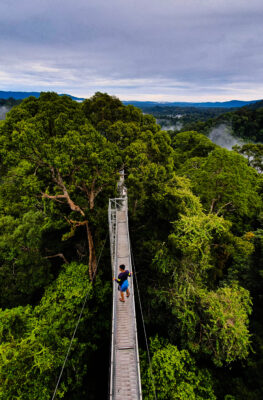Published on September 3, 2013
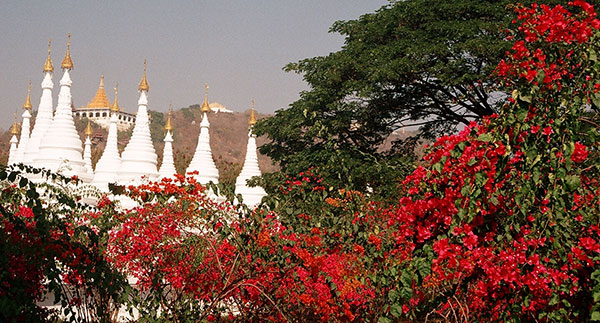
While we have already written extensively about various aspects of the capital cities of the 10 ASEAN nations, we thought it about time we pay some attention to Southeast Asia’s second cities. Having played important roles either in the past and/or the present, some of these cities are vital economic centres today while others are sleepy living relics of past glories. They each have their own distinctive qualities that will interest curious travellers. We commend them to you.
Bandar Seri Begawan, Brunei Darussalam: The capital of Brunei, Bandar Seri Begawan (pictured below) is the centre of Brunei’s commerce, finance and government and government. In many ways, it is also the heart of Brunei’s cultural landscape, housing some of the nation’s most revered landmarks. The city’s breath taking Sultan Omar Ali Saifuddien Mosque is a stunning tribute to the nation’s deep-rooted faith, while the Kampong Ayer offers a glimpse of housing structure on stilts above the Brunei River with the extensive network of wooden walkways, footbridges, and boardwalks. Many of the traditional lifestyles of its inhabitants; fishermen, traders, and artisans; have remained unchanged. Visitors can also experience the Kampong Ayer Cultural and Tourism Gallery, which comprises of five mini-galleries. Each gallery displays the different facets of Kampong Ayer, beginning from the 10th century up to the present day life. The exhibits also include archaeological findings, items from contemporary culture, pictures, map and photographs. About 5-minutes away from the capital is Brunei’s commercial area Gadong which features shop houses offering a range of local and international products, restaurants, boutiques and stores. A popular stop amongst visitors, The Mall – Brunei’s first, largest and vast shopping complex offers an array of shopping choices from souvenirs, handicrafts and textiles. By night food enthusiasts can also grab a bite at the nearby Gadong Night Market that is often a sweet and tasty sight for local delicacies, assorted Malay cakes and biscuits.
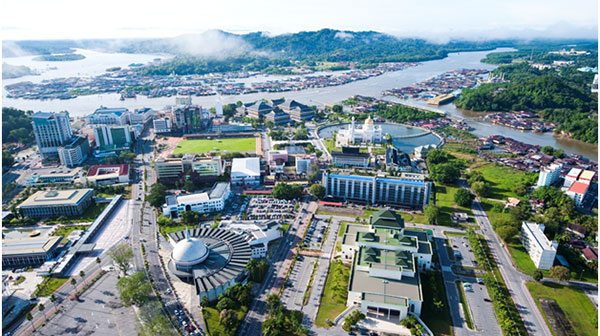
Battambang, Cambodia: Founded in the 11th century by the Khmer Empire, the northwestern Cambodian city of Battambang services the leading rice-producing region in the country. Battambang is the main hub of the northwest, connecting it with the Cambodian capital Phnom Penh and neighbouring Thailand. The tranquil Sangkae River winds its way through Battambang Province providing a picturesque setting for the provincial capital. Home to some of the best preserved French colonial architecture in the country, Battambang also offers visitors a range of natural attractions, including Kamping Puoy Lake, which is famous for its giant lotus flowers. Every Monday and Thursday evening Battambang Circus puts on acrobatics, juggling, aerial, clowning, tightrope and aqua-balance performances by students from the NGO arts school Phare Ponleu Selpak.
Surabaya, Indonesia: Indonesia’s second-largest city and the capital of East Java province, Surabaya is located on the northern shore of East Java at the mouth of the Mas River. To Indonesians, Surabaya is known as “the city of heroes” due to the importance of the Battle of Surabaya in galvanizing Indonesian and international support for Indonesia independence. As one of the most ancient and significant trading ports in Indonesia, a former Dutch-colonial city, and having passed through brief Japanese control during World War II, Surabaya boasts a rich and complex tapestry of religious buildings, monuments, and museums. Visitors can also splash, swim, and slide at Ciputra Waterpark, enjoy the local arts scene at Balai Pemuda, browse and bargain at one of the lively bazaars, or enjoy the vast air-conditioned spaces of modern shopping malls.
Kaysone Phomvihane (Savannakhet), Lao PDR: Lao’s second city is the birthplace of Kaysone Phomvihane, former president of Laos, and was named after him in 2005. Most people still know it as Savannakhet. Like all Lao cities, Kaysone Phomvihane has a mixed population of Lao, Thai, Vietnamese and Chinese, as well as minority peoples from the Lao interior. It has a large 15th century Buddhist temple Wat Sainyaphum, a Chinese temple, a Catholic church, and a mosque. The Second Thai-Lao Friendship Bridge over the Mekong connects to Mukdahan Province in Thailand. Although there is now a casino in the town, visitors are often surprised by the friendly, sleepy atmosphere which conserves many aspects of Lao culture. The small but blossoming tourist sector offers eco-trekking programs on the outskirts of town or further afield. The best time to visit Savannakhet is during one of its festivals, such as Boun Bangfai (the Rocket Festival) where villages compete to see whose rocket can climb the highest.
George Town, Malaysia: Named after Britain’s King George III, George Town is located on the northeast corner of Penang Island. George Town was founded on 11 August 1786 by Captain Francis Light, a trader for the British East India Company, as base for the company in the Malay States. He obtained the island of Penang from the Sultan of Kedah and built Fort Cornwallis to protect George Town. The fort became the nexus of a growing trading post. Today the town is known for its well-preserved colonial core, which is a UNESCO World Heritage Site, with original shophouses dating from the 19th century to the 1930s surviving together with their trades of old. Street markets and hawkers continue to play a part in daily life, and the atmosphere is often likened to that of Singapore back in the 1960s and 1970s. Penang has a similar multicultural mix as Singapore and is considered the foodie capital of Malaysia with its mix of Chinese, Indian, Malay, Arabic, and Western influences.
Mandalay, Myanmar: Mandalay (pictured at the top of article) is the second-largest city and the last royal capital of Burma. Located 716 km north of Yangon on the east bank of the Irrawaddy River, the city is the economic hub of northern Burma and considered the centre of Burmese culture despite the new capital of Naypyidaw’s recent rise. Mandalay is a relatively new city founded by King Mingdon Min of Burma in 1857. Since the British departed in 1948, an influx of Chinese immigrants has reshaped the city’s ethnic makeup and increased commerce with China. Mandalay is centred on the Royal Palace and has neatly planned wide roads and laneways leading out from it, usually filled with bicycles and motorcycles. The magnificent Royal Palace and the great Atumashi (incomparable) pagoda, King Mingdon Min’s finest creations, were heavily damaged during the World War II. They have since been reconstructed. From the base of Mandalay Hill you can climb the stairs or take a shared pick-up. The climb takes about 30-45 min. There are plenty of shops and interesting stops, including buddhas, pagodas, and viewpoints along the way.
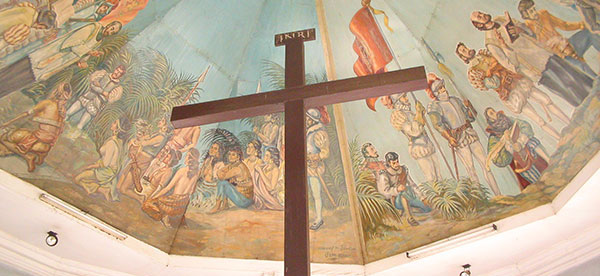
Cebu, Philippines: Located on the eastern shore of Cebu island, Cebu City is the first Spanish settlement and the oldest city in the Philippines. It is the country’s main domestic shipping port, home to about 80% of the country’s shipping companies. Cebu City’s proximity to islands, beaches, resorts, diving locations, and heritage sites, has turned Cebu into the tourist gateway to central and southern Philippines. The city has its own airline, Cebu Pacific Air. As the nation’s second city, oldest city, and a tourist hub, Cebu City is very much a cultural centre. The imprint of Spanish and Roman Catholic culture is evident, with a significant number of Filipino-Spanish heritage buildings including the Basilica Minore del Santo Niño, Fort San Pedro, Casa Gorordo Museum and Magellan’s Cross (pictured above), among others. The island of Cebu gets especially busy on the third Sunday of January due to the Sinulog Festival. It is the local way of honouring Jesus. Main thoroughfares around the city are blocked for an all-day, all-night loud and colourful street party.
Singapore: Singapore is a city state and thus does not have a second city as such. However be sure to visit the living centres of traditional culture in Singapore, such as at Chinatown, Little India, and Kampong Glam (pictured below), which each have distinctive qualities that set them apart from the rest of the metropolis.
Chiang Mai, Thailand: Chiang Mai is the largest city in the mountainous north of Thailand some 700 km from the Thai capital of Bangkok. Chiang Mai is the former capital of the Kingdom of Lanna (1296–1768) and was the tributary Kingdom of Chiang Mai from 1774 until 1939. Chiang Mai means “new city”. It was new when it was founded more than 700 years ago (in 1296) and it manages to maintain a youthful freshness. The Tourism Authority of Thailand describes Chiang Mai as a place to “experience both historical and modern Thai culture coexisting side by side; the city features centuries-old chedis and temples next to modern convenience stores and boutique hotels.” Much of the historical and trendy-modern attractions of the city can be found within the walls and moats of the ancient capital. Outside the walls and beyond the outskirts of the city there are numerous attractions such as Wat Phrathat Doi Suthep, botanical gardens, hill tribe villages, elephant villages, and many opportunities for trekkers, rafters, and other adventurers.
Ho Chi Minh City, Viet Nam: Ho Chi Minh City in the south is Viet Nam’s largest city and therefore must be the country’s second city after the capital Hanoi in the north. Today it is the economic powerhouse of Viet Nam and accounts for a large proportion of the national economy. Under the name Saigon it was the capital of the French colony of Cochin-China and later of the independent republic of South Vietnam from 1955–75. The French gave the city with wide elegant boulevards and distinctly French colonial buildings. Most of these are located in District 1 and are a short leisurely distance from each other. The most prominent structures are the Reunification Palace, City Hall, Municipal Theatre (Opera House), City Post Office, State Bank Office, City People’s Court, Notre-Dame Cathedral, as well as the historic hotels Majestic, Rex, and Caravelle. Much is made of the city’s history through various museums, including the Ho Chi Minh City Museum, Museum of Vietnamese History, the Revolutionary Museum, the Museum of Southeastern Armed Forces, the War Remnants Museum, the Museum of Southern Women, the Museum of Fine Art, the Nha Rong Memorial House, and the Ben Duoc Relic of Underground Tunnels.
Sources: Wikipedia and Wikivoyage.



